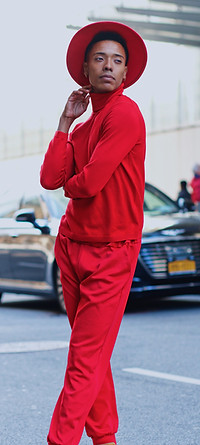
Choreography


'Come On'
There is a long history of criminalizing “deviant” sexual behavior. During this pandemic there is a disproportionate amount of critique towards queer folks engaging in pleasure with others they are finding through social apps whilst ignoring straight folks who are participating in the exact same behavior. While the public health risks of the coronavirus are central to these criticisms, the inequality in treatment between straight and queer individuals highlights the hypersexualization of queer identities.
How can we better understand sex between queer individuals during this period of intense isolation and loneliness? A period exposing the disproportionate persecution of black, (and especially) queer individuals through state-sanctioned murder. Within this site of tension, sex is understood as a form of escapism v. pleasure; an attempt to distract oneself from the harsh reality of a society that condemns queer existence. A reality the current pandemic has exacerbated through pre-existing housing instability, job insecurity, and limited access to healthcare.
‘Come On’ does not reduce queer sex to the false aphorism of a longing for intimacy one never received. Rather, it complicates the role of sex as one occasionally grounded in subsistence. Now more than ever there is a longing for a level of intimacy and tenderness that queer individuals do not systemically receive. In longing to be filled by another through an act rooted in pleasure and vulnerability, we often find ourselves just as empty and weary as before.
Coming soon